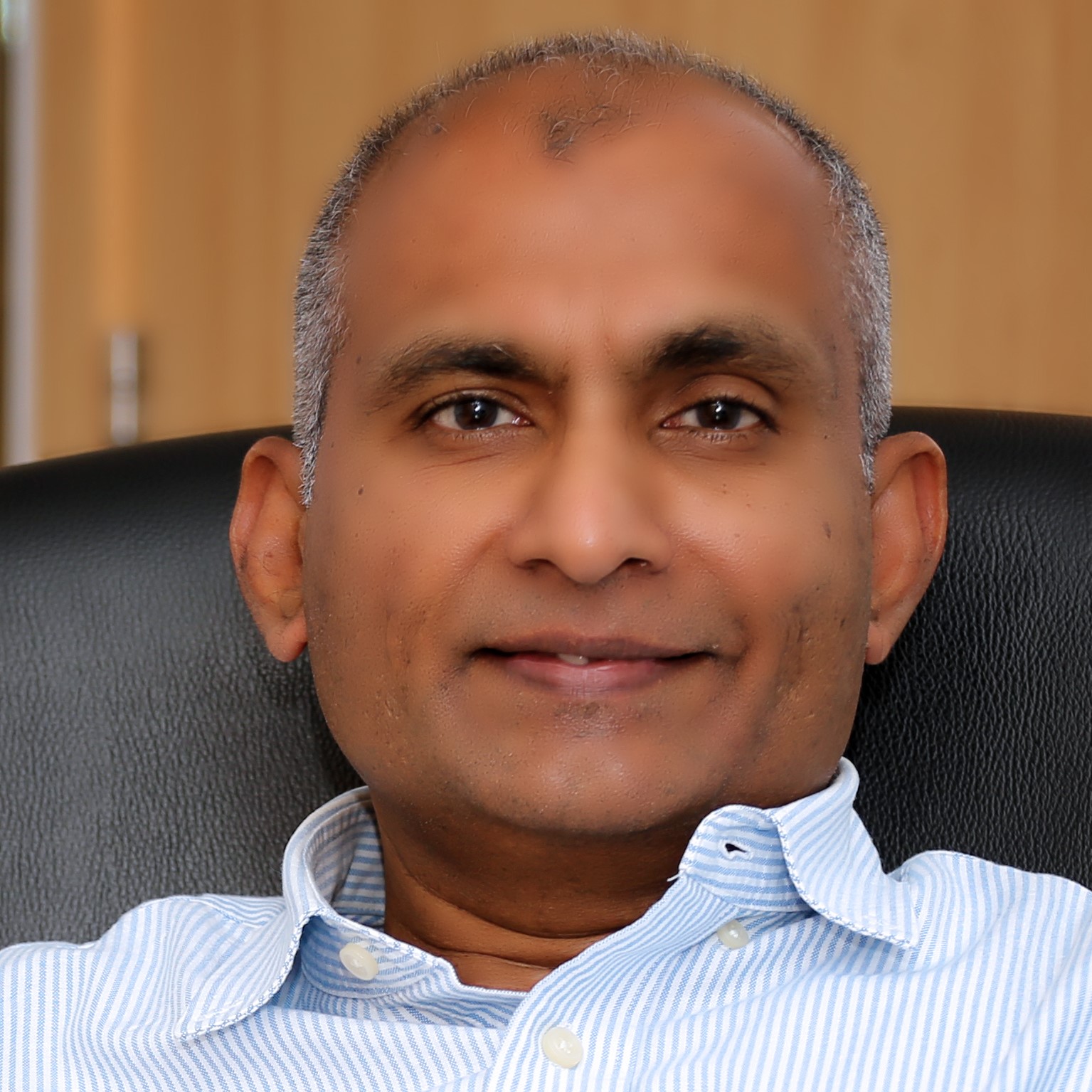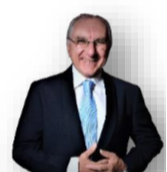Day 2 :
Keynote Forum
Gopa Kumar
Core Physio, India
Keynote: Dynamic taping - A biomechanical taping approach

Biography:
Abstract:
- Scientific Sessions: Brugger Concept | Mio Functional Rehabilitation | Postural Rehabilitation|Cardiac Rehabilitation | Musculoskeletal Therapy | Vestibular Rehabilitation | Kinesiology | Balance Exercise
Location: Conference Hall

Chair
Dagmar Pavlu
Charles University, Czech Republic
Session Introduction
Kritika Satija
Auckland District Health Board, New Zealand
Title: The benefits of early post cardiac surgery recovery program for Tahitian patients
Time : 11:00-11:30
Biography:
Abstract:
Tushar Palekar
Dr. D.Y. Patil College of Physiotherapy, India
Title: Effect of pinch grip strengthening exercises and hand function among tea plantation workers
Time : 11:30-12:00
Biography:
Abstract:
Saud Alsubaie
Prince Sattam bin Abdulaziz University, Saudi Arabia
Title: Quantifying the intensity of balance exercises
Time : 12:00-12:30
Biography:
Abstract:
Manisha Rathi
Dr. D.Y. Patil college of Physiotherapy, India
Title: Effect of whole body vibration on functional performance of lower extremity in elderly
Time : 12:30-13:00
Biography:
Manisha Rathi with her doctoral qualification is expert in evaluation and management of geriatric people and immensely involved in improving the independency and quality of life of the elderly. Her skill in the assessment of geriatrics individuals and treating them to fulfill their functional demand is unique. Squat training to older people on Whole body vibrator is a challenging task but she worked dedicatedly to bring excellent results in enhancing the lower extremity functions and in turn perk up functional independence. Whole body vibration helps in recruiting lower body muscles and thus increases strength and endurance. Her research work mainly focuses on balance, fall efficacy, Gait parameters and functional performance in Elderly. She is also working on assessing reaction time in elderly with a uniquely designed machine by her. Her focused approach and patience towards elderly is remarkable and should be taken in cognizance
Abstract:
Background: Aging leads to many health-related disorders which hampers the functional performance of the elderly individuals like mobility, balance, gait speed and strength. If proper exercises are done then we can regain the functional performance of the elderly, hence this study investigated the effects of vibration on functional performance in the elderly.
Aim: To compare the effects squat training on whole body vibrator and squat training on plain surface on functional performance of lower extremity in the elderly using short physical performance battery and timed up and go test.
Methods: In this experimental study, 30 healthy elderly participants with age group between 60 to 70 years and of both the genders were taken according to geriatric falls efficacy scoring of 16 to 19. Study was conducted at Dr. D. Y. Patil College of Physiotherapy, Pune, Maharashtra, India, after the approval from institutional ethical committee. Participants having any neurological, musculoskeletal or other chronic disease affecting ADL and IADL, any recent upper limb or lower limb fracture which hampers squat training with or without support, any acute inflammatory conditions like bursitis, synovitis, tendinitis, rheumatoid arthritis conditions involving balance deficits having any lower limb prosthesis fitted like a transfemoral or transtibial prosthesis were excluded. Written informed consent was taken from all the participants. The participants were first evaluated where chief complaints, history of present illness, and drug history was noted. Then the geriatric falls efficacy score was documented. These participants were then allocated to either group A or group B of 15 each through simple random sampling using computer generated allotment. Group A were given squat training on a vibratory surface using whole body vibration and group B was given squat training on a plain surface for 4 weeks, 3 sessions/week for both the group. Pre and post values of short physical performance battery and timed up and go test were documented and data analysis was done. Result: The group A showed statistically significant improvement in repeated chair stand (M D=3.6), balance (MD=3.4), gait speed (MD=1.867) which are the components of short physical performance battery and TUG Score (MD=12.53) with p value ≤0.005 as compared to the group B, repeated chair stand (MD=2.533), balance (MD=2.667), gait speed (MD=0.133) and TUG score (MD=13.93).
Conclusion: The significant effects of whole body vibration with squat training on physical function in the elderly individuals using timed short physical performance battery and up and go test.
Sandeep Sharma
Rehabilitation Society of Physical Therapists, India
Title: Examination protocol in a dizzy patient
Time : 14:00-14:30
Biography:
Abstract:
Preeti Madaan
Rehabilitation Society of Physical Therapists, India
Title: VRT (Vestibular Rehabilitation Therapy) -- Role of physical therapy in management of vertigo
Time : 14:30-16:00

Biography:
Abstract:
Vestibular rehabilitation therapy: Role of physical therapy in management of vertigo Vestibular Rehabilitation Therapy (VRT) is the therapy used for rehabilitation of patients with vestibular lesion who have not compensated fully. Basically Vestibular Rehabilitation Therapy is customized exercise program designed according to the need of patient by physiotherapist. Three clear indications for vestibular rehabilitation 1. Specific interventions for benign paroxysmal positional vertigo (BPPV) 2. General interventions for vestibular loss. • Unilateral vestibular loss e.g in case of vestibular neuritis or acoustic neuroma • Bilateral vestibular loss e.g in case of gentamycin toxicity and related conditions • Central vestibular lesions - brainstem infarct, cerebellar infarct, MS etc.. 3. Empirical treatment for common situations where the diagnosis is unclear. • Post-traumatic vertigo • Multifactorial disequilibrium of the elderly. Persons without a vestibular problem e.g. The patients who will not benefit from vestibular rehabilitation therapy are as a sentence... • low blood pressure • medication reactions (other than ototoxicity) • anxiety, malingerers, depression (although T’ai Chi may be helpful for anxiety) • migraine associated vertigo (although it has been reported to be helpful nonetheless) • transient ischemic attacks (TIA) Persons with fluctuating vestibular problems. • Meniere’s disease • perilymph fistula Functional Goals of VRT• Decrease disequilibrium – Improve functional static & dynamic balance. • Improve postural and gait stability. • To reduce motion related dizziness. • Decrease oscillopsia-visual blurring during head movement – increase gaze stability i.e. DVA during both static and dynamic activities
- Regenerative Injections in Osteoarthritis Knee | Qualifying the Intensity of Balance Exercises|B.E.D. Technology| MCIMT | Neurological Physiotherapy | Psychiatric Rehabilitation| Dynamic Taping
Location: Dubai, UAE

Chair
Gopakumar Sukumaran
Core Physio, India
Session Introduction
Manoj Kumar Nair
Dubai Physiotherapy & Rehabilitation Centre, Dubai
Title: Regenerative injections in osteoarthritis knee: Evidences

Biography:
Manoj Kumar P V Nair is an Indian Board Certified Physiatrist working in Dubai for the last 13 years. His main areas of interests are musculoskeletal medicine, interventional physiatry, pain management in musculoskeletal conditions, US guided injection techniques and sports injury rehabilitation. He is the author of books and journal articles and speaker in various platforms. He is passionate about lifestyle modifications in disease management and a regular participant in running events
Abstract:
Osteoarthritis is one of the most prevalent joint diseases and the leading cause of pain and disability around the world. Globally it ranks among the top 50 common sequelae of disease and injuries, affecting about 250 million people and estimated to affect around 4% of global population. Among the total global disease burden for OA, knee OA accounts for about 83%. Prevalence among females found to outnumber males in most of the studies. The prevalence of OA knee among American population found to be doubled since the mid-20th century. As the burden of this disease increases, the demand for Total Knee Replacement (TKR) surgeries goes up. According to estimates in US alone, there would be around 673% increase in TKR by 2030, needing about 3.48 million procedures done annually. There are various non-operative treatments available as conservative measures in OA Knee and a lot of controversies exist in the efficacy of these. Hence the paper discusses various regenerative injections viz., PRP, stem cells, dextrose prolotherapy used in OA knee and available evidences in literature.
Radhika Thakkar
SBB College of Physiotherapy, India
Title: Pulsed electromagnetic field: A review in musculoskeletal conditions
Biography:
Abstract:
Himanshu Mathur
Jaipur National University, India
Title: Forward head posture: New horizons require attention
Biography:
Abstract:
Abdullah S Bin Hussein
Physical therapy Department - Prince Sultan Military Medical City, Saudi Arabia
Title: The relationship between hip strength and peak knee valgus angle during single leg squat
Biography:
Abstract:
Purpose: Available research is limited and conflicting with regard to the role of the hip muscles in controlling knee valgus. Thus, the aim of this study is to investigate whether hip muscle’s strength is significantly related to peak knee valgus angle (PKVA) during a single leg squat in healthy subjects. Methods: A correlational research design was chosen to test the hypotheses of this study in 30 healthy subjects (17 males and 13 females). Procedures included isometric strength testing using the DILLON ED junior dynamometer for hip (abduction/ adduction, flexion/extension, and internal/external rotation). Subjects were videotaped as they performed single leg squats using two digital video cameras. Video data for squat trials were analyzed using the silicon COACH Pro Version 6. Results: ICC values indicated excellent reliability for PKVA and knee flexion angle, 0.948 and 0.933, respectively. Pearson correlation coefficients demonstrated significant negative relationships between hip abduction (r = -0.550), adduction (r = -0.475), extension (r = -0.421), and PKVA. Linear regression analysis revealed that hip extensors, abductors, adductors accounted for 17.7%, 30.3% and 26.6% respectively, of variance in PKVA. Conclusions: Silicon COACH by one rater produced a reliable measurement of knee angle in frontal plane during single leg squat in healthy population. Decreased isometric strength of hip abductors, adductors and extensors was closely associated with increased peak valgus angle at the knee. This relationship is of clinical relevance when designing rehabilitative and injury prevention strengthening programs. Implications: The current study provided some support that excessive knee valgus is potentially associated with poor hip control in the frontal plane. Identifying the effect of muscular strength on the frontal plane position offers the potential for intervention, hence reducing the effect of malalignment
Snehalata Tiwari
Kaloji Narayana Rao University of Health Sciences, India
Title: Effectiveness of the modified constraint induced movement therapy versus mirror therapy in improving hand dexterity in patients with sub-acute stroke: A comparative study
Biography:
Abstract:
Biography:
Head of physiotherapy and rehabilitation, Welfare medical centre. UAE Certified Kinesiotaping Instructor ( CKTI ) - KTAI , USA Dry Needling instructor - Dry needling Institute, South Africa.
Abstract:
Silverio De Rocca
MPR International School, Switzerland
Title: Mio functional and postural rehabilitation – B E D (Body Equilibrium Device) technology

Biography:
Silverio Di Rocca has completed Bachelor’s degree in Dentistry, Postgraduate degree in Functional Orthopedics both from the University of Buenos Aires, Argentina. He has also done a degree in Dentistry and Prosthetic at the University of Turin, Italy and a Doctorate in Dentistry and Prosthetic at University of Turin, Italy.
